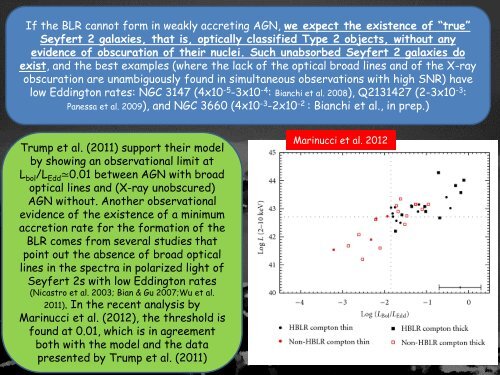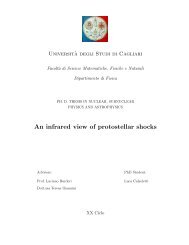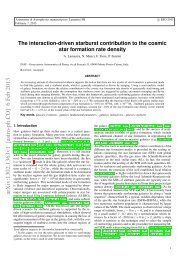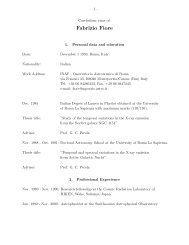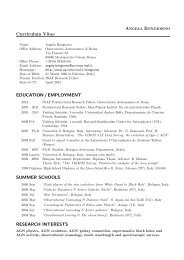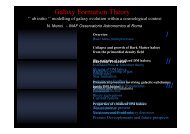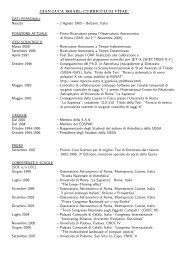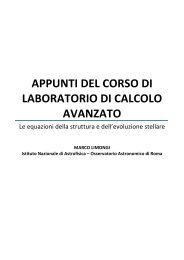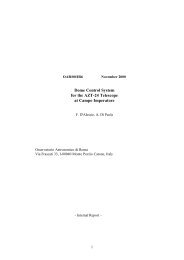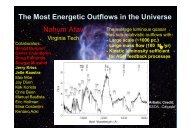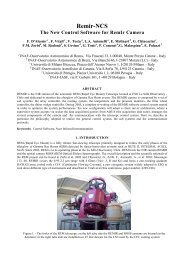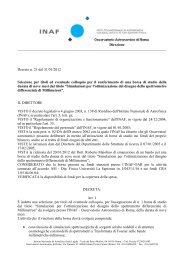The absorber - INAF-Osservatorio Astronomico di Roma
The absorber - INAF-Osservatorio Astronomico di Roma
The absorber - INAF-Osservatorio Astronomico di Roma
Create successful ePaper yourself
Turn your PDF publications into a flip-book with our unique Google optimized e-Paper software.
If the BLR cannot form in weakly accreting AGN, we expect the existence of “true”<br />
Seyfert 2 galaxies, that is, optically classified Type 2 objects, without any<br />
evidence of obscuration of their nuclei. Such unabsorbed Seyfert 2 galaxies do<br />
exist, and the best examples (where the lack of the optical broad lines and of the X-ray<br />
obscuration are unambiguously found in simultaneous observations with high SNR) have<br />
low Ed<strong>di</strong>ngton rates: NGC 3147 (4x10 -5 -3x10 -4 : Bianchi et al. 2008), Q2131427 (2-3x10 -3 :<br />
Panessa et al. 2009), and NGC 3660 (4x10 -3 -2x10 -2 : Bianchi et al., in prep.)<br />
Trump et al. (2011) support their model<br />
by showing an observational limit at<br />
L bol /L Edd ≃0.01 between AGN with broad<br />
optical lines and (X-ray unobscured)<br />
AGN without. Another observational<br />
evidence of the existence of a minimum<br />
accretion rate for the formation of the<br />
BLR comes from several stu<strong>di</strong>es that<br />
point out the absence of broad optical<br />
lines in the spectra in polarized light of<br />
Seyfert 2s with low Ed<strong>di</strong>ngton rates<br />
(Nicastro et al. 2003; Bian & Gu 2007;Wu et al.<br />
2011). In the recent analysis by<br />
Marinucci et al. (2012), the threshold is<br />
found at 0.01, which is in agreement<br />
both with the model and the data<br />
presented by Trump et al. (2011)<br />
Marinucci et al. 2012


